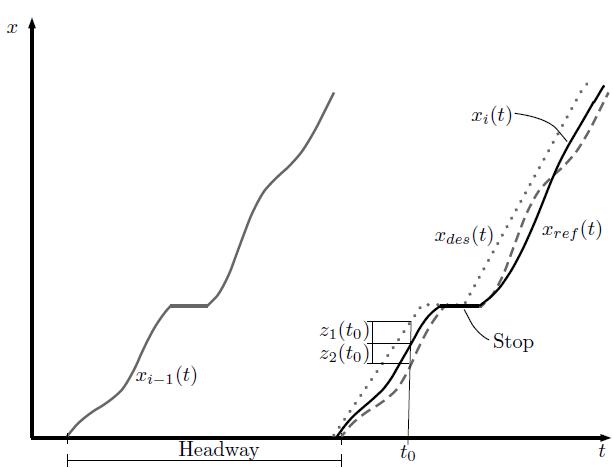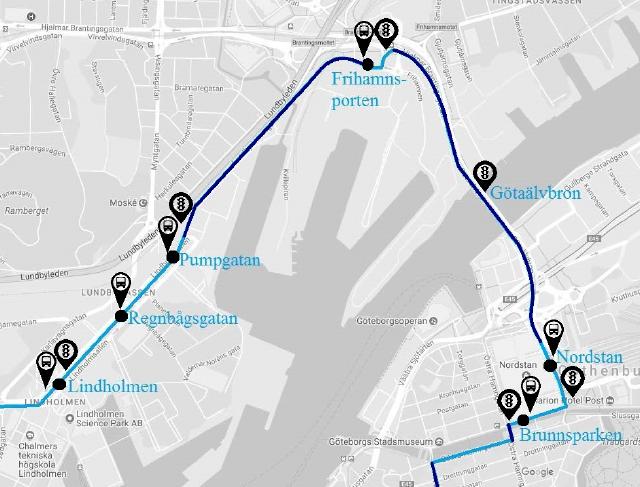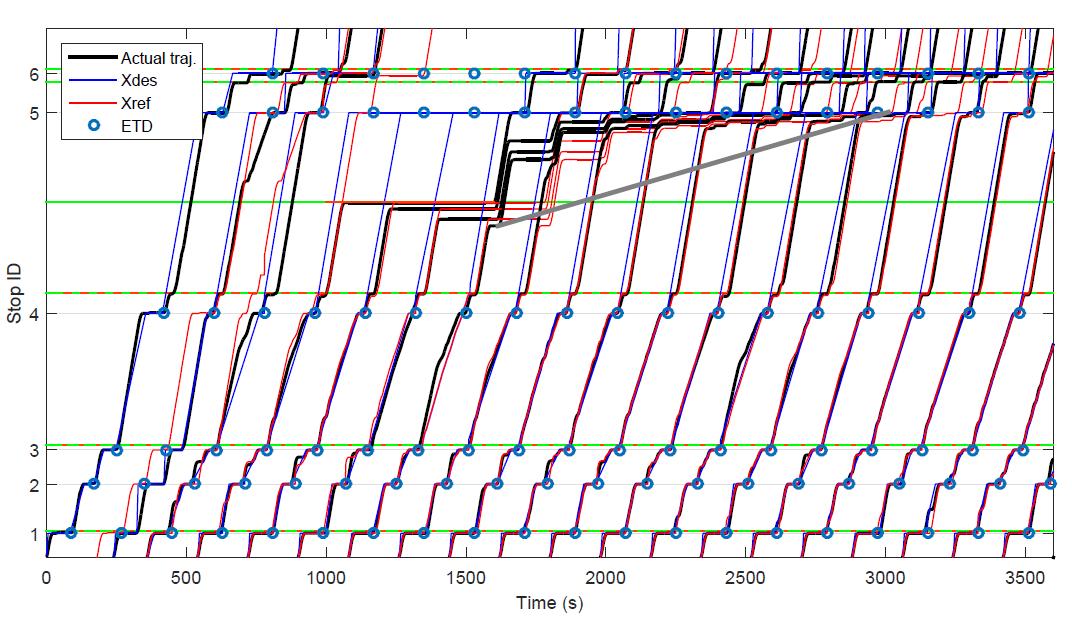Bus Bunching Control
On busy lanes, where public transport buses are frequent, bus bunching is a common phenomenon:

Bunching leads to non-homogeneous utilization of buses and therefore degradation of service quality.
The objective is to (i) adhere buses to a timetable and (ii) guarantee equal headways.
The proposed control methodology is a shrinking horizon model predictive velocity control.
Different control strategies are considered:
(i) timetable tracking: buses priorize the timetable over the headway reference.
(ii) headway tracking: buses try to keep equal headways.
(iii) balanced: both objectives are equally important.
The controllers are simulated in VISSIM in a realistic traffic setting (Göteborg):

The system was evaluated in the event of severe perturbation
(Xdes: desired position, Xref: reference position, ETD: estimated time of departure):

Related Publication:
Varga B, Tettamanti T and Kulcsár B (2018), "Optimally combined headway and timetable reliable public transport system", Transportation Research Part C: Emerging Technologies. Vol. 92, pp. 1 - 26.
https://doi.org/10.1016/j.trc.2018.04.016



